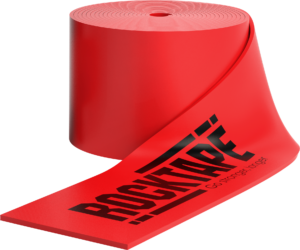by Mitch Hauschildt, MA, ATC, CSCS
The shoulder is a complex joint that can be very challenging to deal with. As a kid, we were taught that the shoulder is a ball and socket joint, but the reality is that it is much more like a golf ball sitting on a golf tee. So, it relies heavily on soft tissue structures for stability. A labral tear or a small stretch to the joint capsule will lead to pain and mechanical symptoms as the brain feels threatened by the lack of consistent stability.
In the past, I would have told you that the only way that you can fix this pain is with a surgical intervention, especially if they are feeling clicking or catching. I would have told you that the pain that those individuals feel is driven by their tissue damage and the only way to reduce their pain is to fix the tissue issue.
As our understanding of pain has improved, so has our treatment approach. We now understand that pain is an output, not an input, and is in response to feeling threatened. Thus, the key to improving pain is to decrease the threat and make the brain feel safe.
One simple and very effective technique that I am using a lot with my shoulder stability patients is wrapping the shoulder with a floss band and taking it through a range of motion. A floss band is a simple, inexpensive and highly effective tool that has been used for several years on athletes and active individuals. I was first exposed to them by Kelly Starret and his VooDoo bands. The traditional use for them is to combine compression with shear to improve mobility. I’ve used them successfully in this capacity for several years, but I am also seeing great results with a non-traditional application.
When a joint is unstable, the brain is craving a tight, centrated joint. When we wrap a joint with a floss band, we essentially “hug” the joint and make the brain feel comfortable and safe. This will greatly reduce the painful sensation and usually any mechanical symptoms.
For some people, this reduction will last for hours or even days. For others, the improvement will be much shorter in duration. At the end of the day, if their threat signal is being caused by a true pathology or underlying mechanical issue, their pain will likely return at some point until that problem is fixed. The floss band technique will open up a window of trainability to work within.
For my college athletes, that may mean that ability to compete in their sport that day. For other patients, that may mean that they are able to perform exercises that will ultimately lead to improved outcomes in the end. Either way, I consider it a win.
One of the biggest challenges with using the floss band on the shoulder is the application itself. Wrapping the shoulder takes practice and can be tricky. Oftentimes as you wrap the band around the shoulder it will want to roll up on the edges. As you move around the shoulder, work to find the best angles to get it to lie down all around the joint.
Once the joint is wrapped, then the rest of the intervention is simple. Have them move through a range of motion with it on. Take them through something simple like shoulder flexion, abduction, internal or external rotation or even pushups. Perform several sets of whatever you choose and then take the band off. You will be impressed with the improved range of motion, reduced pain and improvement in clicking or catching. Now its time to exercise to lock in the change and take advantage of the open window.
Learn more about the application in the video below.


Leave a Reply